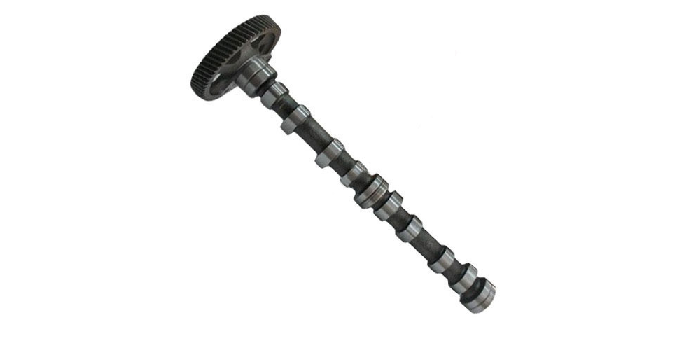Get Your Free Quote
- Best Price Guarantee
Buy with confidence because you aren't getting a better price than this. - Free Shipping
Enjoy the luxury of free shipping on orders above $299. - A Grade Quality Used Engines & other Parts.
Avail the best OEM Auto parts & components that are just as new. - Our Friendly Parts Specialist will get you what you need !!
Car CamShaft

The camshaft uses lobes (called cams) that push against the valves to open them as the camshaft rotates; springs on the valves return them to their closed position. This is a critical job, and can have a great impact on an engine's performance at different speeds. On the next page of this article you can see the animation we built to really show you the difference between a performance camshaft and a standard one.
We've got some great animations that show you how different engine layouts, like single overhead cam (SOHC) and double overhead cam (DOHC), really work. And then we'll go over a few of the neat ways that some cars adjust the camshaft so that it can handle different engine speeds more efficiently.
Camshaft Basics
The key parts of any camshaft are the lobes. As the camshaft spins, the lobes open and close the intake and exhaust valves in time with the motion of the piston. It turns out that there is a direct relationship between the shape of the cam lobes and the way the engine performs in different speed ranges.
To understand why this is the case, imagine that we are running an engine extremely slowly -- at just 10 or 20 revolutions per minute (RPM) -- so that it takes the piston a couple of seconds to complete a cycle. It would be impossible to actually run a normal engine this slowly, but let's imagine that we could. At this slow speed, we would want cam lobes shaped so that:
Just as the piston starts moving downward in the intake stroke (called top dead center, or TDC), the intake valve would open. The intake valve would close right as the piston bottoms out.
The exhaust valve would open right as the piston bottoms out (called bottom dead center, or BDC) at the end of the combustion stroke, and would close as the piston completes the exhaust stroke.
This setup would work really well for the engine as long as it ran at this very slow speed. But what happens if you increase the RPM? Let's find out.
When you increase the RPM, the 10 to 20 RPM configuration for the camshaft does not work well. If the engine is running at 4,000 RPM, the valves are opening and closing 2,000 times every minute, or 33 times every second. At these speeds, the piston is moving very quickly, so the air/fuel mixture rushing into the cylinder is moving very quickly as well.
When the intake valve opens and the piston starts its intake stroke, the air/fuel mixture in the intake runner starts to accelerate into the cylinder. By the time the piston reaches the bottom of its intake stroke, the air/fuel is moving at a pretty high speed. If we were to slam the intake valve shut, all of that air/fuel would come to a stop and not enter the cylinder. By leaving the intake valve open a little longer, the momentum of the fast-moving air/fuel continues to force air/fuel into the cylinder as the piston starts its compression stroke. So the faster the engine goes, the faster the air/fuel moves, and the longer we want the intake valve to stay open. We also want the valve to open wider at higher speeds -- this parameter, called valve lift, is governed by the cam lobe profile.
There are several different arrangements of camshafts on engines. We'll talk about some of the most common ones.
You've probably heard the terminology:
Single overhead cam (SOHC)
Double overhead cam (DOHC)
Pushrod